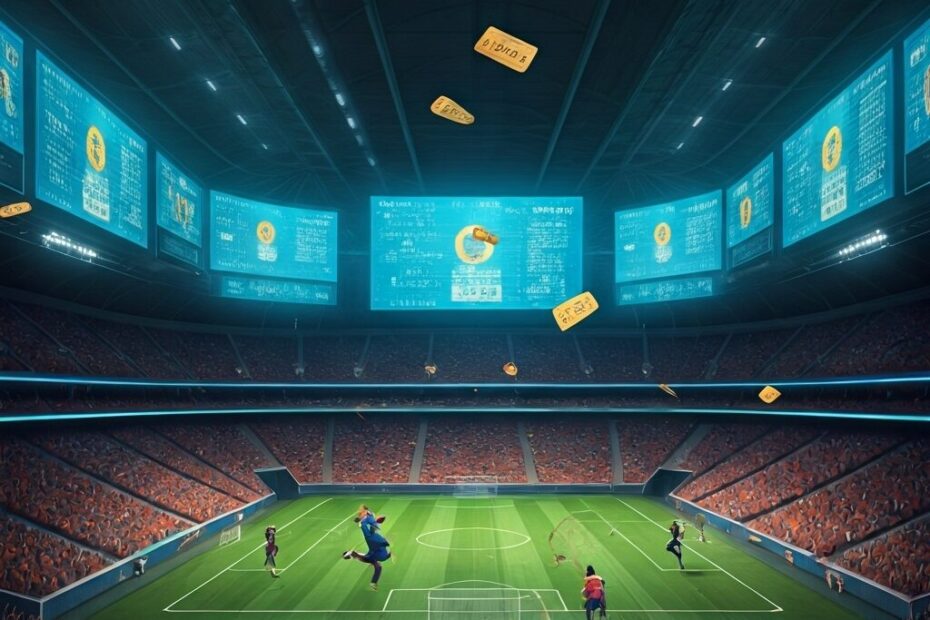How Blockchain is Intersecting with Sport
John: Hi everyone, I’m John, a tech blogger specializing in Web3, metaverse, and blockchain topics over at Blockchain Bulletin. Today, we’re diving into how blockchain technology is crossing paths with the sports industry, from fan engagement to secure ticketing, based on the latest developments in 2025. If you’d like a simple starter guide to exchanges, take a look at this beginner-friendly overview.
Lila: That sounds exciting, John! Readers are often curious about how tech like blockchain makes sports more interactive and fair. Can you start by explaining the basics?
The Basics of Blockchain in Sports
John: Absolutely, Lila. Blockchain is a decentralized digital ledger that records transactions securely and transparently, without needing a central authority like a bank. In sports, it’s being used to handle things like ticket sales and athlete data, ensuring everything is verifiable and hard to tamper with.
Lila: Got it—that ledger part sounds like a super-secure notebook. How did this intersection start in the past?
John: In the past, around 2017-2018, early adopters like Socios.com introduced fan tokens, which are digital assets on blockchain that let fans vote on minor club decisions. This built on Bitcoin’s blockchain foundation from 2009, but sports applications really picked up with NFTs (non-fungible tokens, unique digital items) in 2021, like NBA Top Shot selling digital basketball highlights.
Key Developments Through the Years
Lila: NFTs—those are like one-of-a-kind digital collectibles, right? What changed after that initial boom?
John: Yes, exactly, Lila. From 2022 to 2024, the focus shifted from hype to practical uses, with leagues like the NFL exploring blockchain for supply chain tracking of merchandise. A 2024 systematic review published on March 22 in the International Journal of Networked and Distributed Computing highlighted use cases like secure data sharing and collectibles traceability, showing blockchain’s potential beyond just tokens.
Lila: Interesting timeline. So, what’s happening currently in 2025?
John: Currently, as of 2025-10-08, blockchain is enhancing transparency in sports like football and basketball. For instance, a study from 2025-06-17 in Applied Sciences journal analyzed 293 professionals in Romania, finding football uses it more for ticketing, while basketball applies it to performance analytics.
Real-World Use Cases Today
Lila: Can you give some concrete examples of how it’s working right now?
John: Sure thing. In ticketing, blockchain prevents fraud by making tickets verifiable on the chain—companies like those mentioned in recent news from 2025-10-07 on X posts describe tokenized tickets for secure, scalper-proof access. For fan engagement, fan tokens allow voting and perks; a post from 2025-09-23 on X noted how they turn spectators into stakeholders with in-game rewards.
Lila: That stakeholder idea is cool. What about esports and betting?
John: In esports, crypto is reshaping competitive gaming, with a 2025-09-30 article from FinancialContent reporting a maturing ecosystem focused on asset ownership and community. For betting, blockchain ensures fair, transparent wagers, but remember, regulations vary by jurisdiction—always check local laws and official guidelines for compliance.
John: Another use case is in digital transactions for the sports industry chain. A 2025-07-11 paper in Scientific Reports proposed models using blockchain for decentralized revenue distribution, reducing intermediaries and costs.
Market Growth and Recent News
Lila: How big is this market getting?
John: The blockchain in sports market is projected to grow at a CAGR of 9% over the next five years, according to a 2024-10-16 report from Mordor Intelligence, with key players like Algorand and Dapper Labs leading. Recent news from 2025-10-08 via GlobeNewswire announced Signing Day Sports progressing toward a business combination with One Blockchain, aiming to enhance athlete recruitment tech.
Lila: Wow, numbers like that show real momentum. Are there any risks we should know about?
John: Yes, risks include volatility in token values and potential regulatory hurdles. For safeguards, here’s a quick list of tips:
- Verify sources: Stick to official project sites or reputable media like CoinDesk for updates.
- Use secure wallets: Protect your digital assets with hardware options to avoid hacks.
- Stay informed: Follow verified experts on X for sentiment, but cross-check facts.
- Avoid scams: Don’t share private keys and be wary of unsolicited offers.
Looking Ahead to Future Intersections
Lila: Great tips—safety first! What might come next?
John: Looking ahead, integrations could deepen with Web3 in sports, like more tokenized sponsorships and AR experiences tied to blockchain. A 2025-09-17 X post from Atleta Network highlighted shifts toward fairer fantasy leagues and digital fan collections, suggesting broader adoption by 2026.
Lila: AR sounds futuristic. Any final thoughts on why this matters?
John: It matters because blockchain brings trust and efficiency to sports, empowering fans and athletes alike. We’ve seen steady progress from early tokens to current analytics tools, with more innovation on the horizon. And if you’d like a bit more background on exchanges, you might enjoy this global guide.
Lila: Thanks, John—this really clarifies how blockchain is making sports more inclusive and secure for everyone involved.
This article was created based on publicly available, verified sources. References:
- How Blockchain is Intersecting with Sport
- Blockchain in Sports: A Comparative Analysis of Applications and Perceptions in Football and Basketball
- Research on the digital transaction model of the sports industry chain based on blockchain technology
- Blockchain Use Cases in the Sports Industry: A Systematic Review
- Blockchain in Sports Market Size & Share Analysis
- Signing Day Sports Reports Continued Progress Toward Business Combination with One Blockchain
